foundations of data science for everyone XII
dr.federica bianco | fbb.space | fedhere | fedhere


Generative AI
this slide deck:
Recap: Data Science
0
FDSFE
Data Science
The discipline that deals with extraction of information from data in a specific domain context, from data collection through inference
(Problem Identification and Planning)
- Data Collection
- Data Exploration
- Data Preparation
- Model Identification
- Model Building
- Model Evaluation
- Model Deployment.
Data Science
The discipline that deals with extraction of information from data in a specific domain context, from data collection through inference
(Problem Identification and Planning)
- Data Collection
- Data Exploration
- Data Preparation
- Model Identification
- Model Building
- Model Evaluation
- Model Deployment.
remote sensing
survey science
instrumental design and development
data retrieval
...
Data Science
The discipline that deals with extraction of information from data in a specific domain context, from data collection through inference
(Problem Identification and Planning)
- Data Collection
- Data Exploration
- Data Preparation
- Model Identification
- Model Building
- Model Evaluation
- Model Deployment.


data types
identify correlation
missing variable
...
Data Science
The discipline that deals with extraction of information from data in a specific domain context, from data collection through inference
(Problem Identification and Planning)
- Data Collection
- Data Exploration
- Data Preparation
- Model Identification
- Model Building
- Model Evaluation
- Model Deployment.
Scaling and
whitening
tokenizing
...
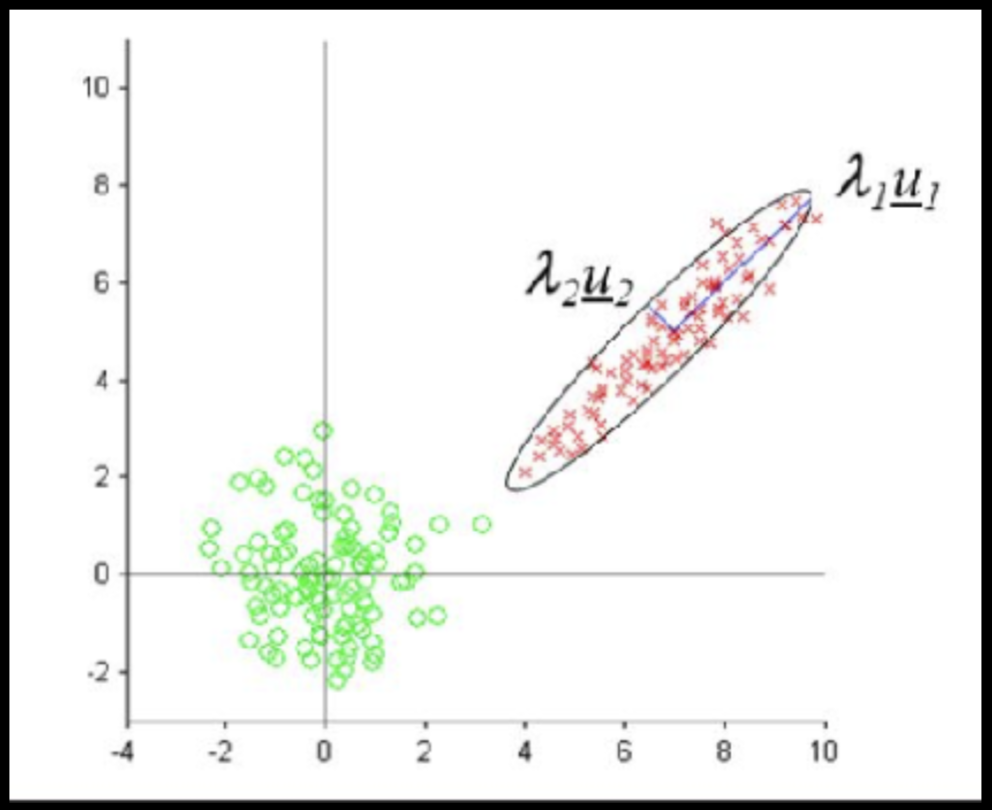
Data Science
The discipline that deals with extraction of information from data in a specific domain context, from data collection through inference
(Problem Identification and Planning)
- Data Collection
- Data Exploration
- Data Preparation
- Model Identification
- Model Building
- Model Evaluation
- Model Deployment.
what is the goal:
statistical analysis
anomaly detection
prediction
structure identification
....
what is the task:
regression
classification
Data Science
The discipline that deals with extraction of information from data in a specific domain context, from data collection through inference
(Problem Identification and Planning)
- Data Collection
- Data Exploration
- Data Preparation
- Model Identification
- Model Building
- Model Evaluation
- Model Deployment.




SciPy
Data Science
The discipline that deals with extraction of information from data in a specific domain context, from data collection through inference
(Problem Identification and Planning)
- Data Collection
- Data Exploration
- Data Preparation
- Model Identification
- Model Building
- Model Evaluation
- Model Deployment.



Data driven models for exploration of structure and prediction that learn parameters from data.
Machine Learning
y
x
x
y
Reinforcement Learning
Active Learning
unupervised learning supervised learning
Data driven models for exploration of structure, prediction that learn parameters from data.
unupervised ------ supervised
set up: All features known for all observations
Goal: explore structure in the data
- data compression
- understanding structure
- anomaly detection
Algorithms: kMeans clustering, DBSCAN, Agglomerative clustering
x
y
Machine Learning
Data driven models for exploration of structure, prediction that learn parameters from data.
unupervised ------ supervised
set up: All features known for a sunbset of the data; one feature cannot be observed for the rest of the data
Goal: predicting missing feature
- classification
- regression
Algorithms: regression, (SVM), Classification and Regression Tree methods, k-nearest neighbors, neural networks, (...)
x
y
Machine Learning
unupervised ------ supervised
unupervised ------ supervised
Machine Learning
set up: All features known for a sunbset of the data; one feature cannot be observed for the rest of the data
Goal: predicting missing feature
- classification
- regression
Algorithms: regression, (SVM), Classification and Regression Tree methods, k-nearest neighbors, neural networks, (...)
set up: All features known for all observations
Goal: explore structure in the data
- data compression
- understanding structure
- anomaly detection
Algorithms: kMeans clustering, DBSCAN, Agglomerative clustering
Learning relies on the definition of a loss function
| learning type | loss / target |
|---|---|
| unsupervised | intra-cluster variance / inter cluster distance |
| supervised | distance between prediction and truth |
Machine Learning
model parameters are learned by calculating a loss function for diferent parameter sets and trying to minimize loss (or a target function and trying to maximize)
e.g. supervised
L1 = |target - prediction|
Learning relies on the definition of a loss function
Machine Learning
supervised and unsupervised
e.g. unsupervised
Inertia =
Interaction with the environment builds a reward function
Machine Learning
reinforcement
The goal of the agent is to maximize a cumulative reward signal over time
The objective is not to predict a specific output but to learn a policy or strategy that maximizes the cumulative reward over time.
Supervised Learning tasks
regression ------ classification
Target Variable: CONTINUOUS
(age, income, temperature...)
Target Variable: Categorical
(color, shape, income class...)


The definition of a loss function requires the definition of distance or similarity
Machine Learning
Minkowski distance
Jaccard similarity
Great circle distance

The definition of a loss function requires the definition of distance or similarity
Machine Learning

Deep Learning
0
recap

x1
x2
b1
b2
b3
b
w11
w12
w13
w21
w22
w23
multilayer perceptron
w: weight
sets the sensitivity of a neuron
b: bias:
up-down weights a neuron
multilayer perceptron
output
layer of perceptrons
w: weight
sets the sensitivity of a neuron
b: bias:
up-down weights a neuron
f: activation function:
turns neurons on-off
multilayer perceptron
w: weight
sets the sensitivity of a neuron
b: bias:
up-down weights a neuron
f: activation function:
turns neurons on-off
layer connectivity
output
input layer
hidden layer
output layer
Fully connected: all nodes go to all nodes of the next layer.
output
input layer
hidden layer
output layer
Sparcely connected: all nodes go to all nodes of the next layer.
layer connectivity
output
input layer
hidden layer
output layer
Sparcely connected: all nodes go to all nodes of the next layer.
The last layer is always connected
layer connectivity
how does it relate to matrix multiplication

each layer is a matrix
Except this is a very misleading representation

there are no biases or activation functions
each layer should be a different shape
1x3
3x5
5x2
=
2x1
what we are doing is just a series of matrix multiplictions.
DeepNeuralNetwork
what we are doing is exactly a series of matrix multiplictions.
3x5
5x2
2x1
=
DeepNeuralNetwork
what we are doing is exactly a series of matrix multiplictions.
3x5
5x2
2x1
=
DeepNeuralNetwork
what we are doing is exactly a series of matrix multiplictions.
3x5
5x2
2x1
=
DeepNeuralNetwork
what we are doing is exactly a series of matrix multiplictions.
DeepNeuralNetwork
The purpose is to approximate a function φ
y = φ(x)
which (in general) is not linear with linear operations
DeepNeuralNetwork
The purpose is to approximate a function φ
y = φ(x)
which (in general) is not linear with linear operations
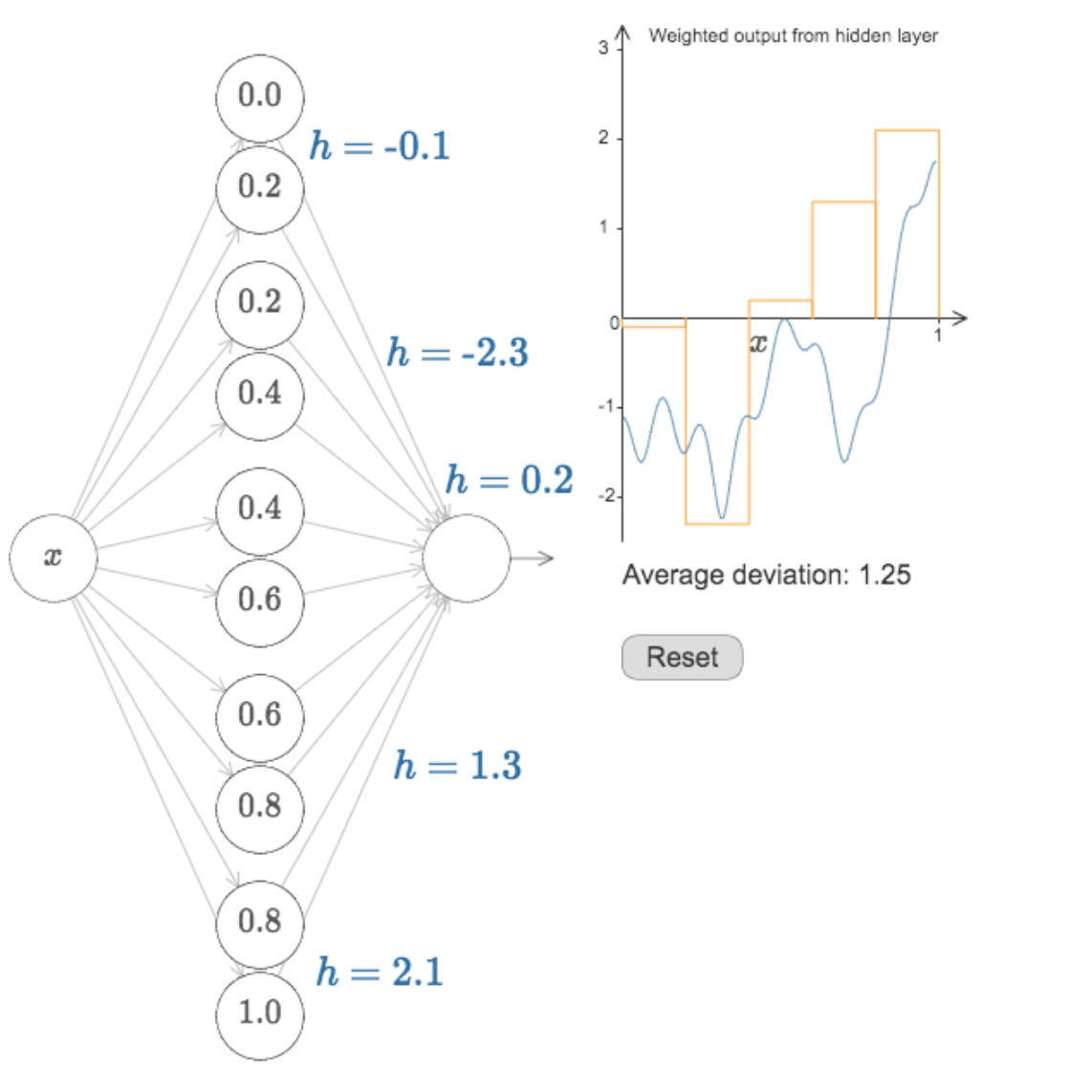
output
input layer
hidden layer
output layer
hidden layer
32 parameters and
?? hyperparameters
activation functions -
loss function - 1
optimization method - 1
architecture - M
how many hyperparameters?
Parameters and hyperparameters


Training models with this many parameters requires a lot of care:
. defining the metric
. optimization schemes
. training/validation/testing sets
But just like our simple linear regression case, the fact that small changes in the parameters leads to small changes in the output for the right activation functions.
define a cost function, e.g.
x1
x2
b1
b2
b3
b
w11
w12
w13
w21
w22
w23
proper care of your DNN
0
NN are a vast topics and we only have 2 weeks!
Some FREE references!
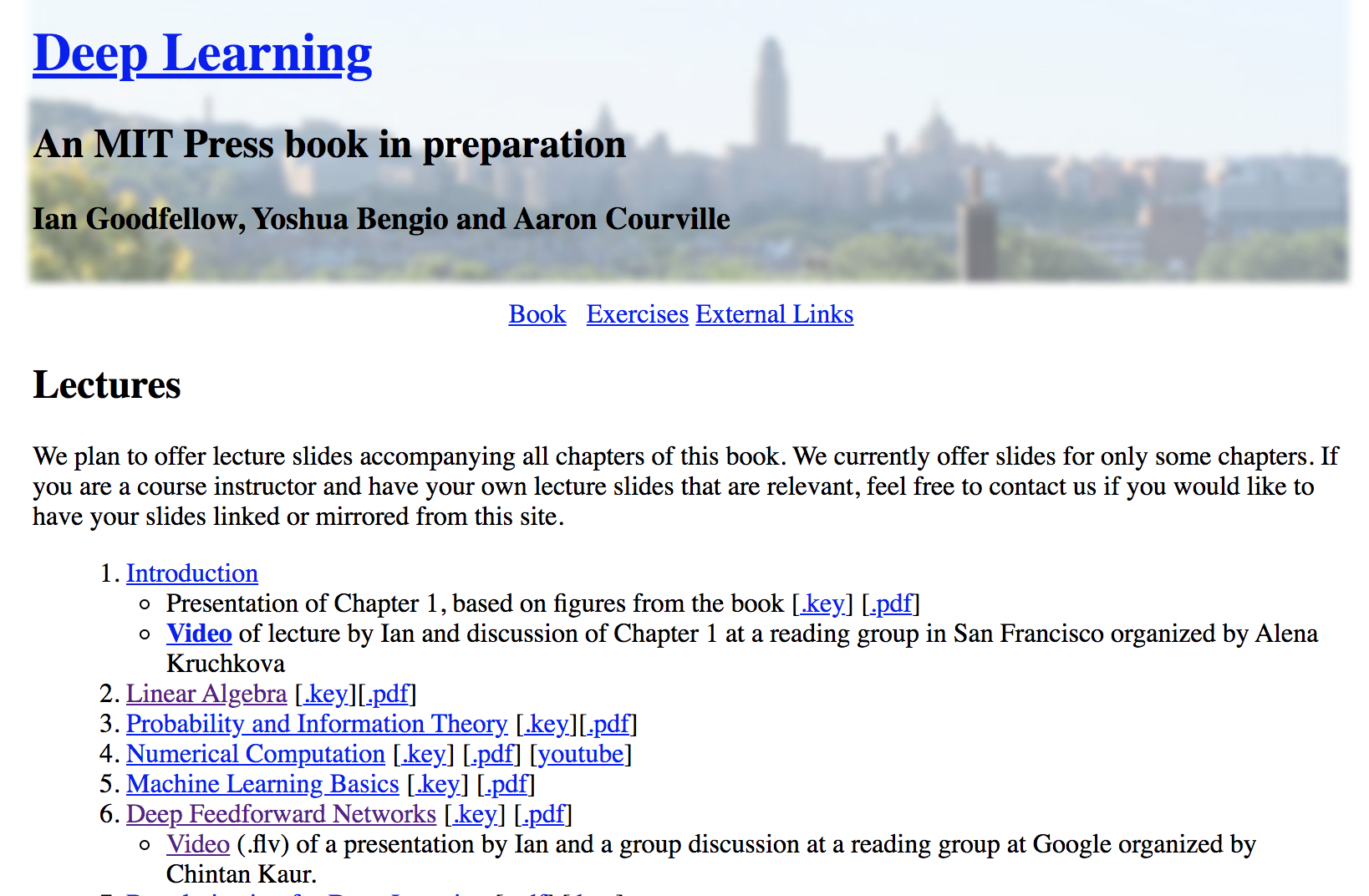
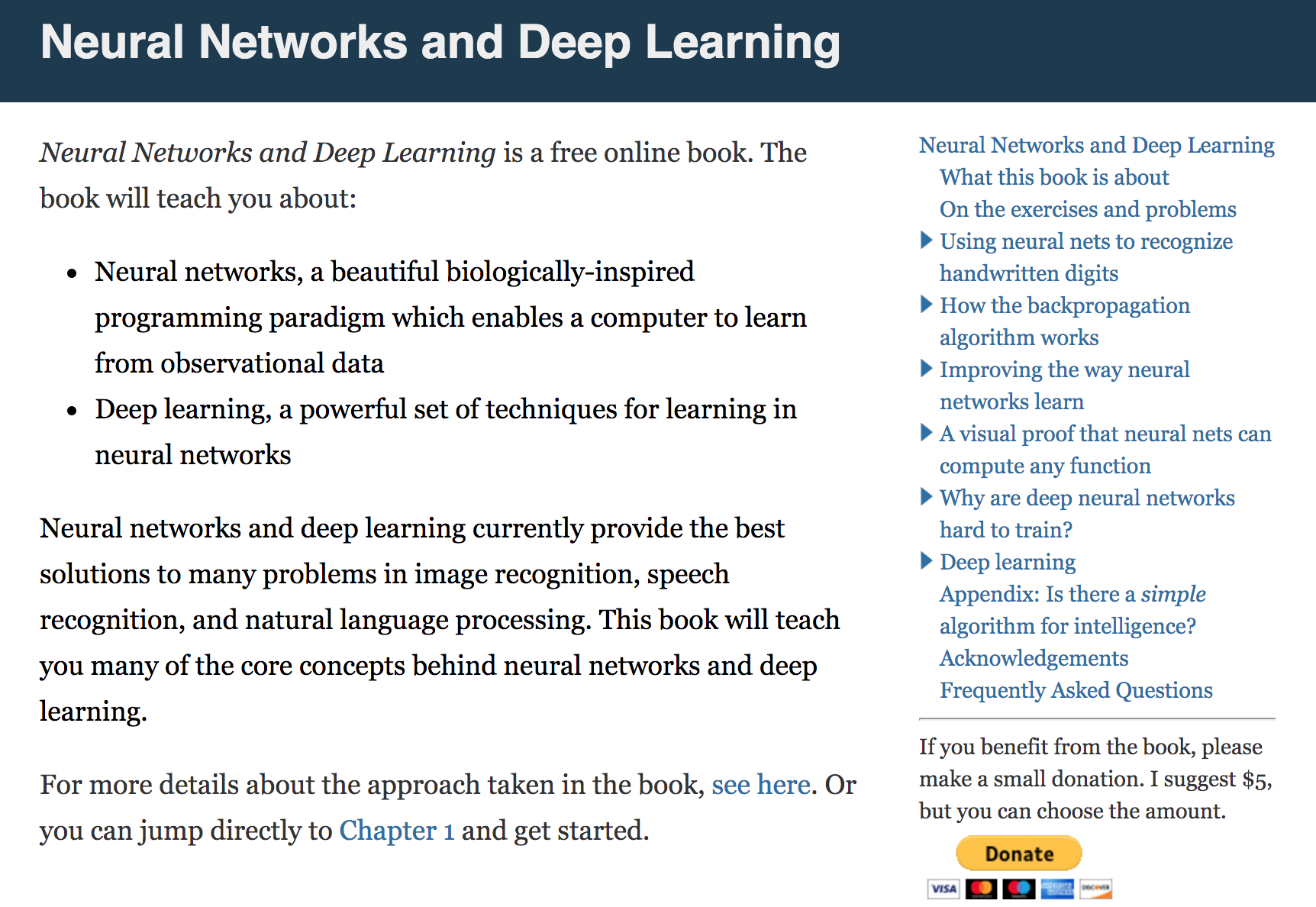
michael nielsen
better pedagogical approach, more basic, more clear
ian goodfellow
mathematical approach, more advanced, unfinished
michael nielsen
better pedagogical approach, more basic, more clear
Lots of parameters and lots of hyperparameters! What to choose?
cheatsheet
-
architecture - wide networks tend to overfit, deep networks are hard to train
- number of epochs - the sweet spot is when learning slows down, but before you start overfitting... it may take DAYS! jumps may indicate bad initial choices (like in all gradient descent)
- loss function - needs to be appropriate to the task, e.g. classification vs regression
-
activation functions - needs to be consistent with the loss function
- optimization scheme - needs to be appropriate to the task and data
- learning rate in optimization - balance speed and accuracy
- batch size - smaller batch size is faster but leads to overtraining
An article that compars various DNNs
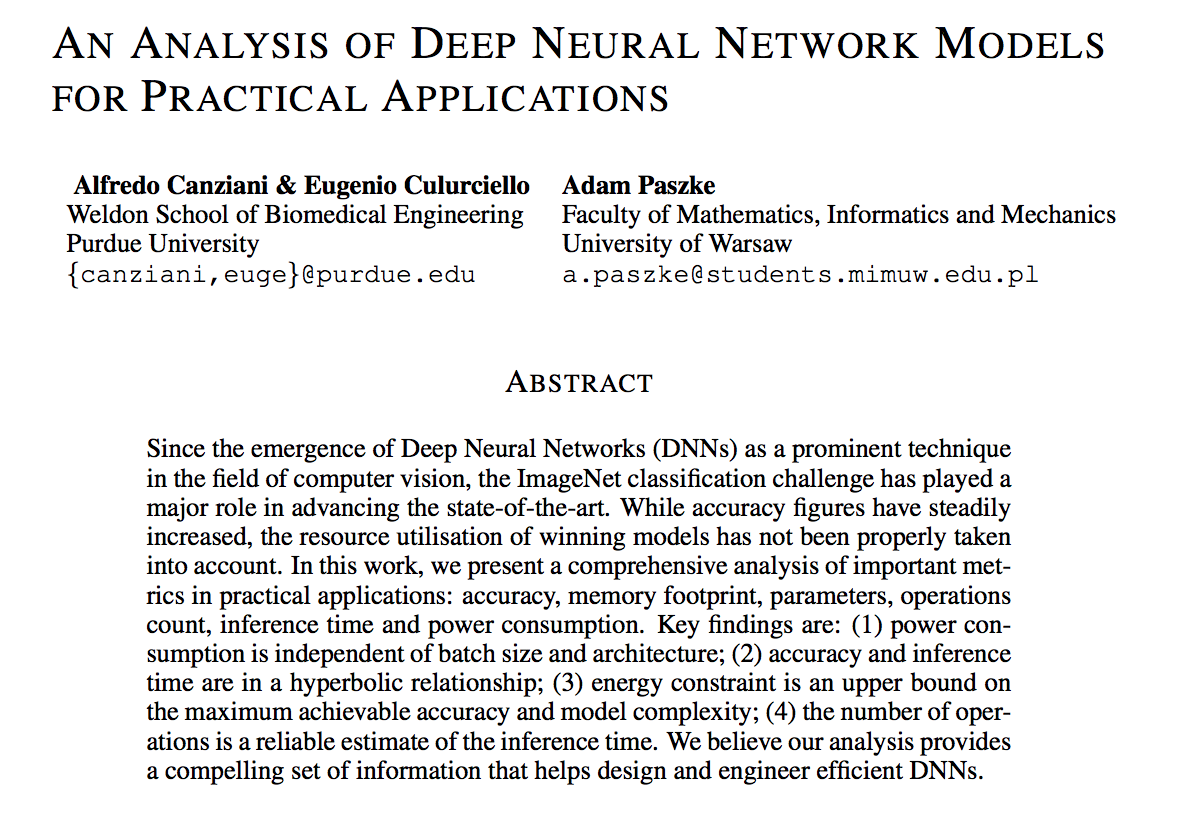
An article that compars various DNNs

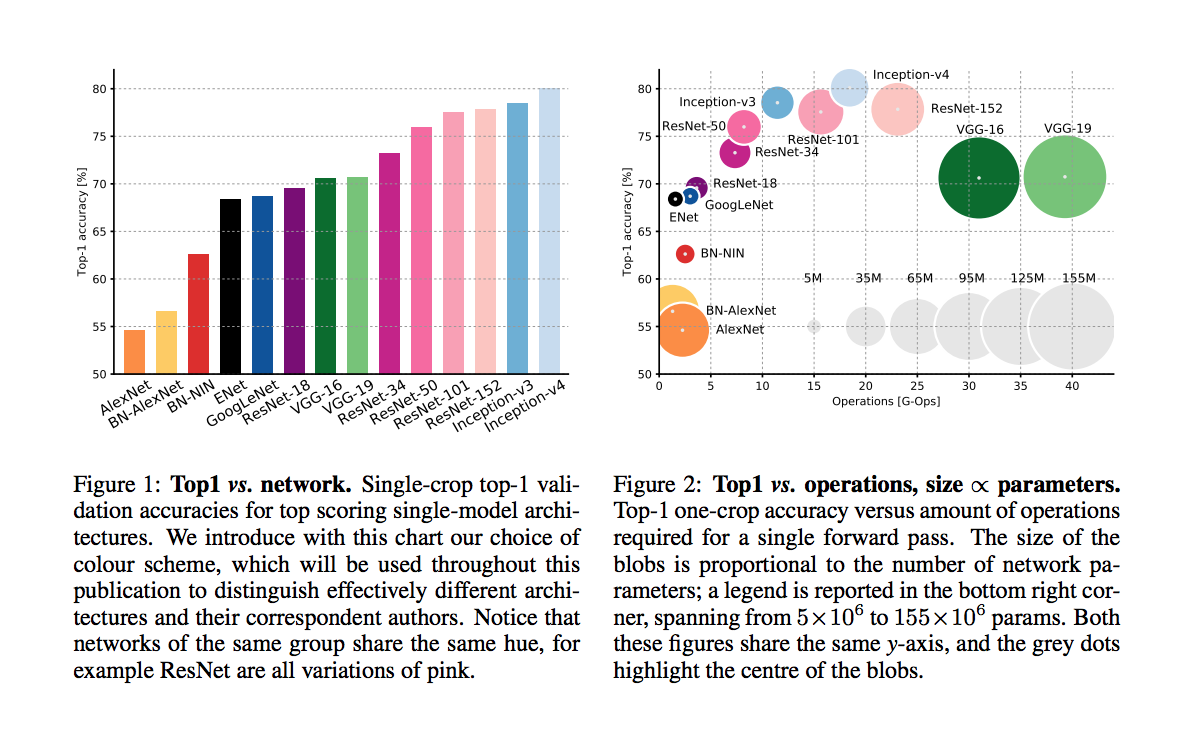
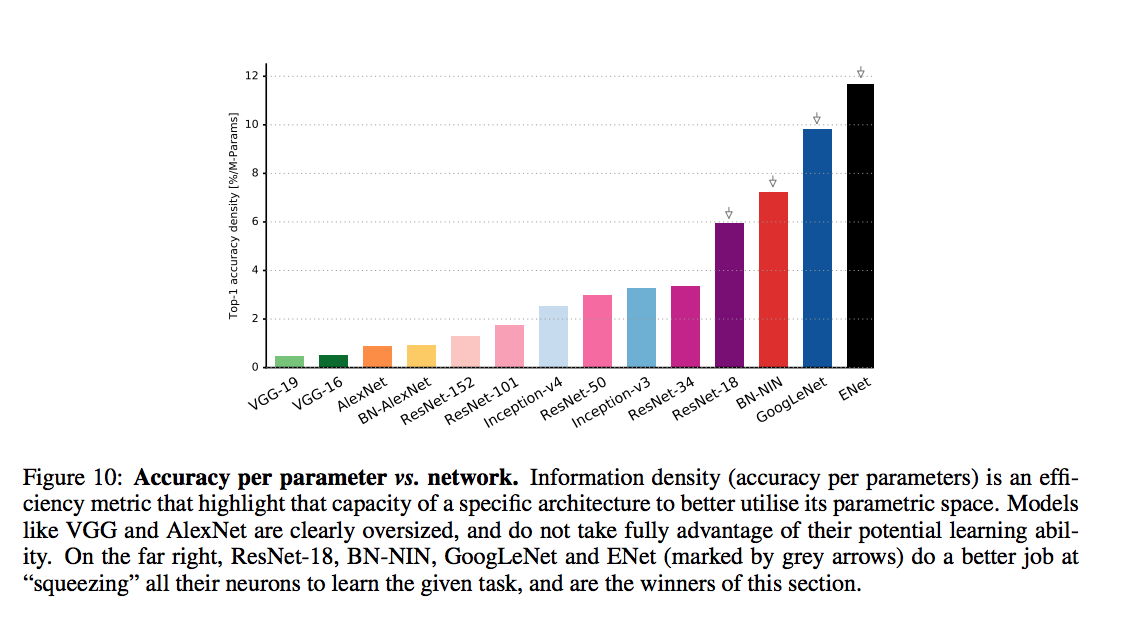
accuracy comparison
An article that compars various DNNs


accuracy comparison
An article that compars various DNNs

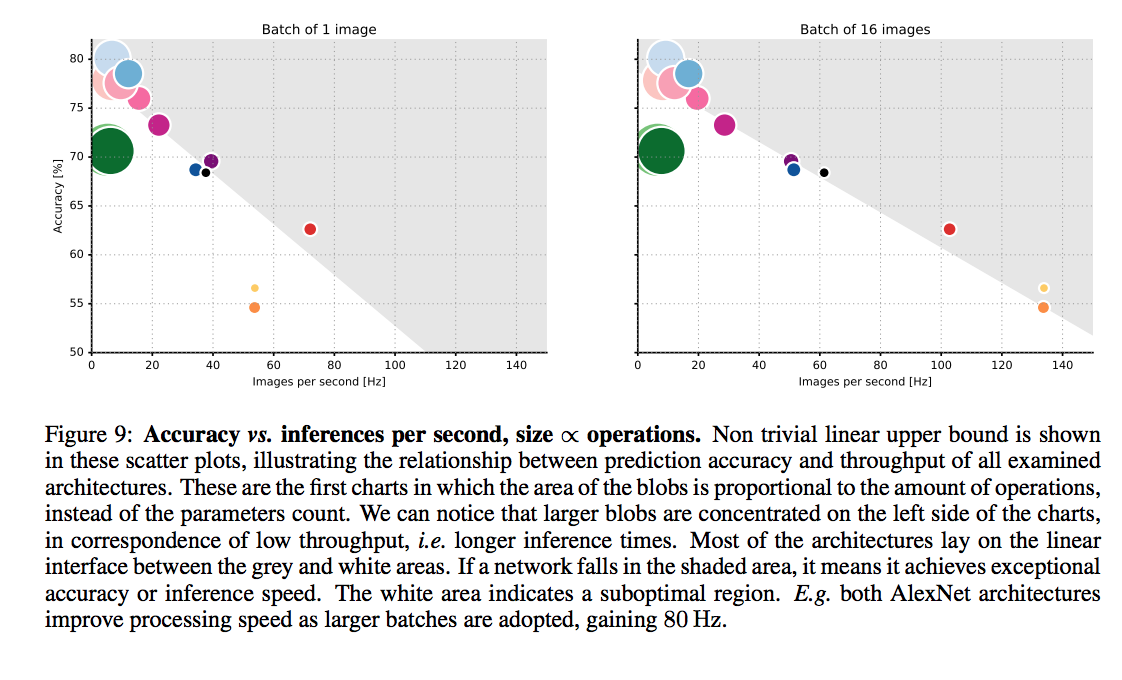
batch size
Lots of parameters and lots of hyperparameters! What to choose?
cheatsheet
- architecture - wide networks tend to overfit, deep networks are hard to train
-
number of epochs - the sweet spot is when learning slows down, but before you start overfitting... it may take DAYS! jumps may indicate bad initial choices
-
loss function - needs to be appropriate to the task, e.g. classification vs regression
-
activation functions - needs to be consistent with the loss function
- optimization scheme - needs to be appropriate to the task and data
- learning rate in optimization - balance speed and accuracy
- batch size - smaller batch size is faster but leads to overtraining
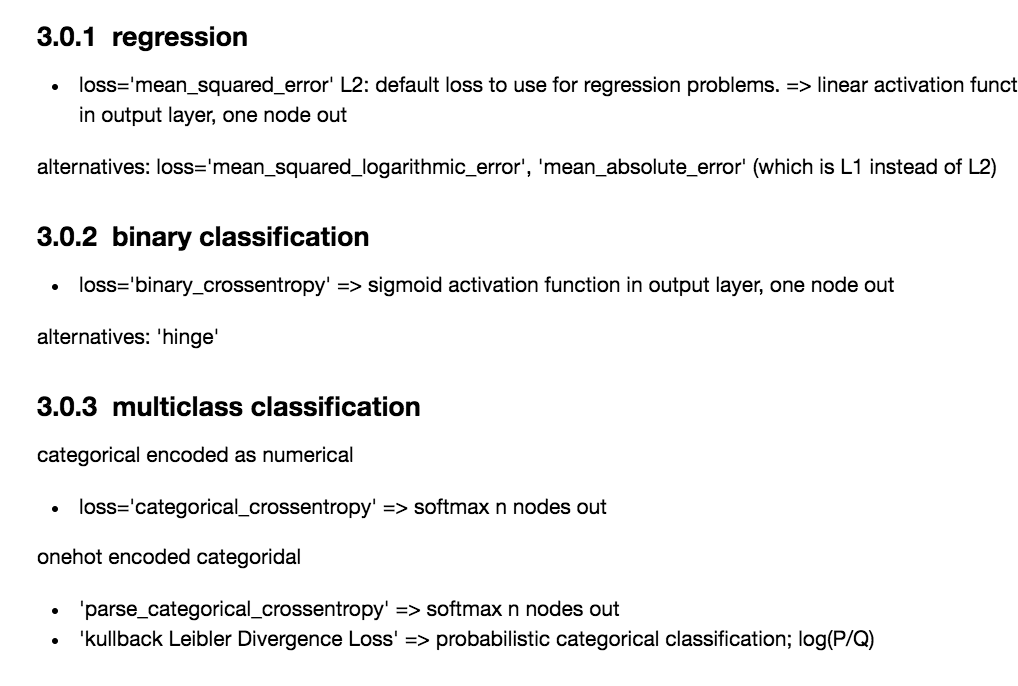
What should I choose for the loss function and how does that relate to the activation functiom and optimization?
Lots of parameters and lots of hyperparameters! What to choose?
Lots of parameters and lots of hyperparameters! What to choose?
cheatsheet

always check your loss function! it should go down smoothly and flatten out at the end of the training.
not flat? you are still learning!
too flat? you are overfitting...
loss (gallery of horrors)


jumps are not unlikely (and not necessarily a problem) if your activations are discontinuous (e.g. relu)

when you use validation you are introducing regularizations (e.g. dropout) so the loss can be smaller than for the training set
loss and learning rate (not that the appropriate learning rate depends on the chosen optimization scheme!)
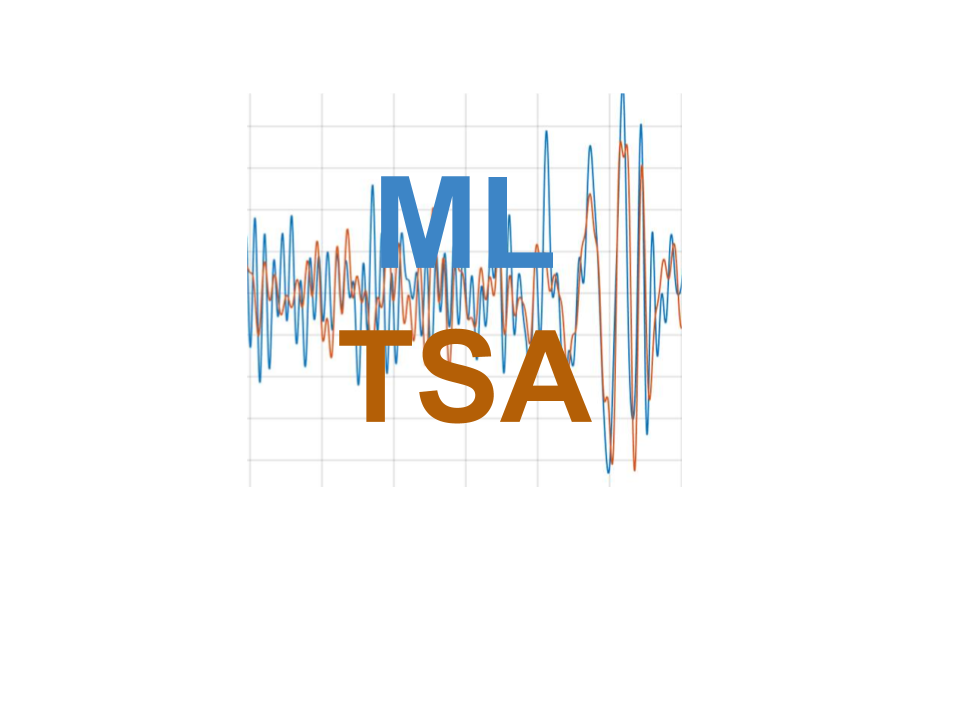
Building a DNN
with keras and tensorflow
autoencoder for image recontstruction
What should I choose for the loss function and how does that relate to the activation functiom and optimization?
| loss | good for | activation last layer | size last layer |
|---|---|---|---|
| mean_squared_error | regression | linear | one node |
| mean_absolute_error | regression | linear | one node |
| mean_squared_logarithmit_error | regression | linear | one node |
| binary_crossentropy | binary classification | sigmoid | one node |
| categorical_crossentropy | multiclass classification | sigmoid | N nodes |
| Kullback_Divergence | multiclass classification, probabilistic inerpretation | sigmoid | N nodes |
On the interpretability of DNNs
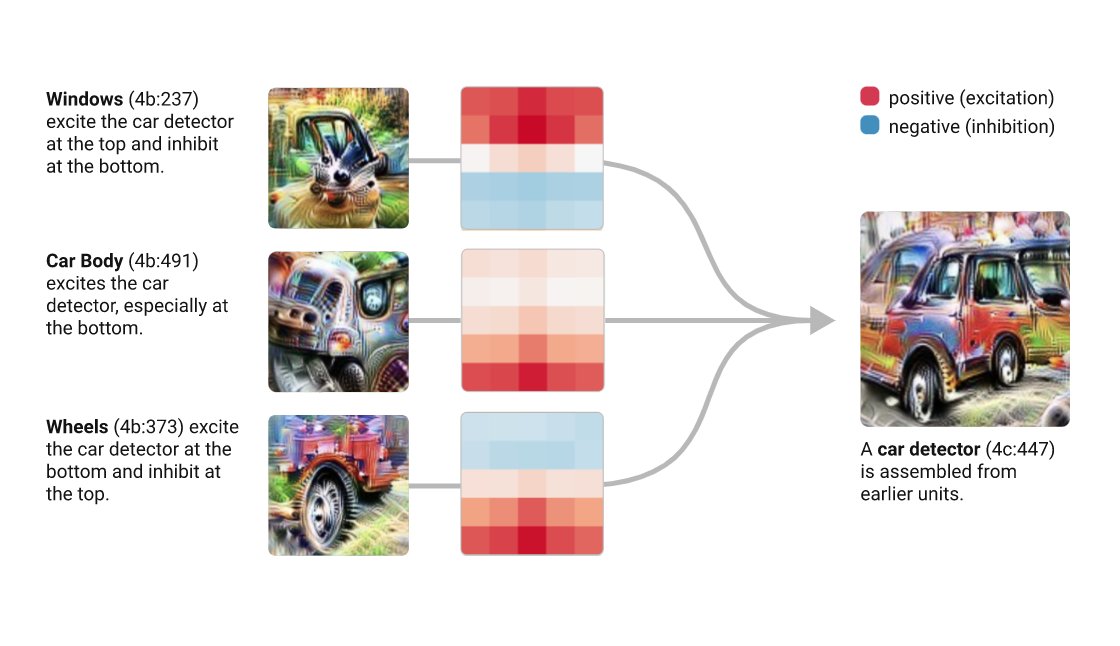
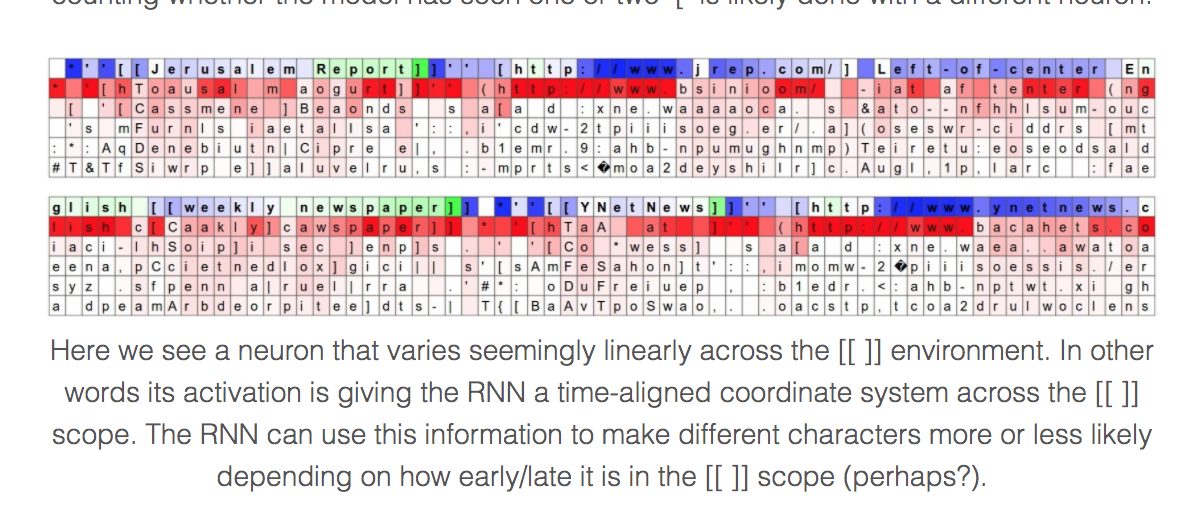

generative AI
2
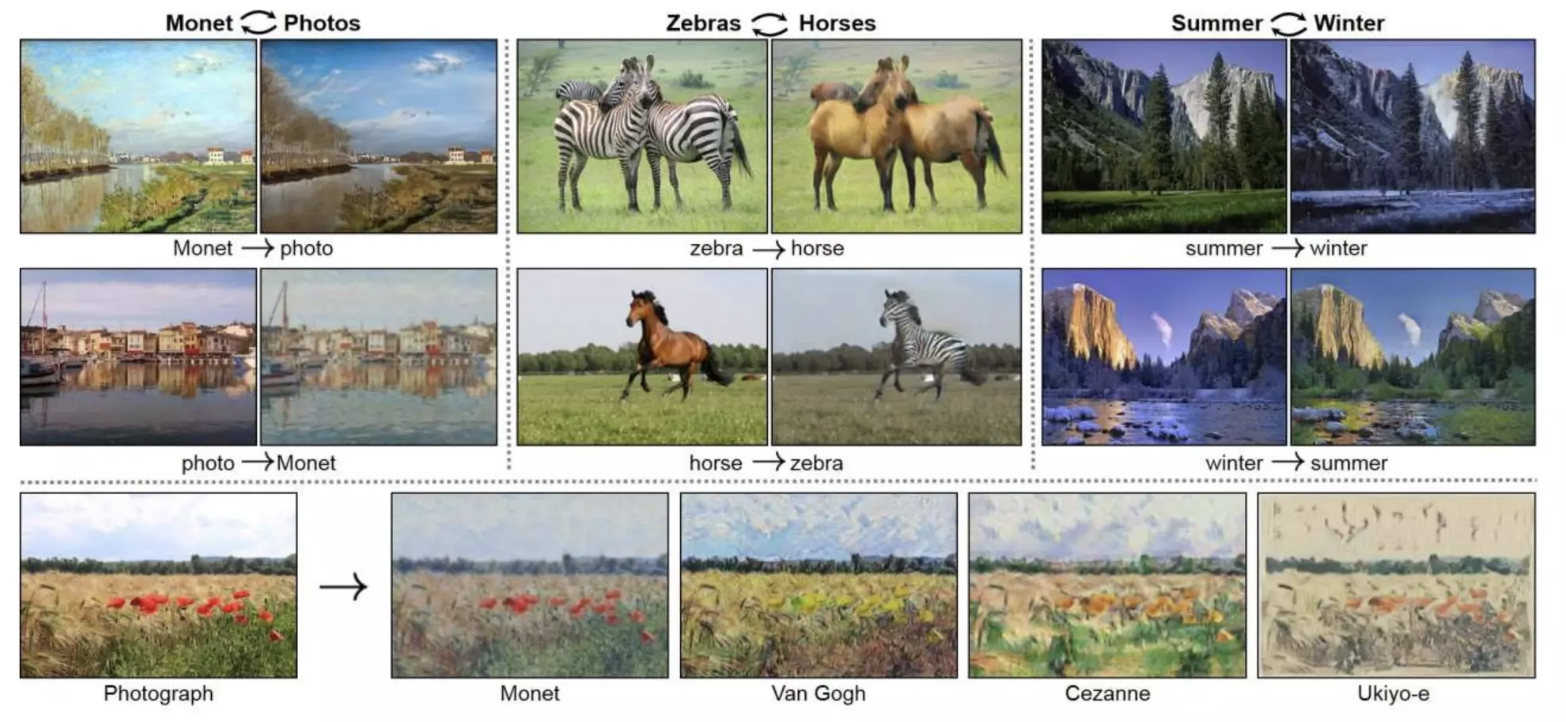
Applications
-
Image Generation (and 3D Shape Generation)
-
Semantic Image-to-Photo Translation
-
Image Resolution Increase
-
Text-to-Speech Generator
-
Speech-to-Speech Conversion
-
Text Generation (Chat GP3)
-
Music Generation
-
Image-to-Image Conversion


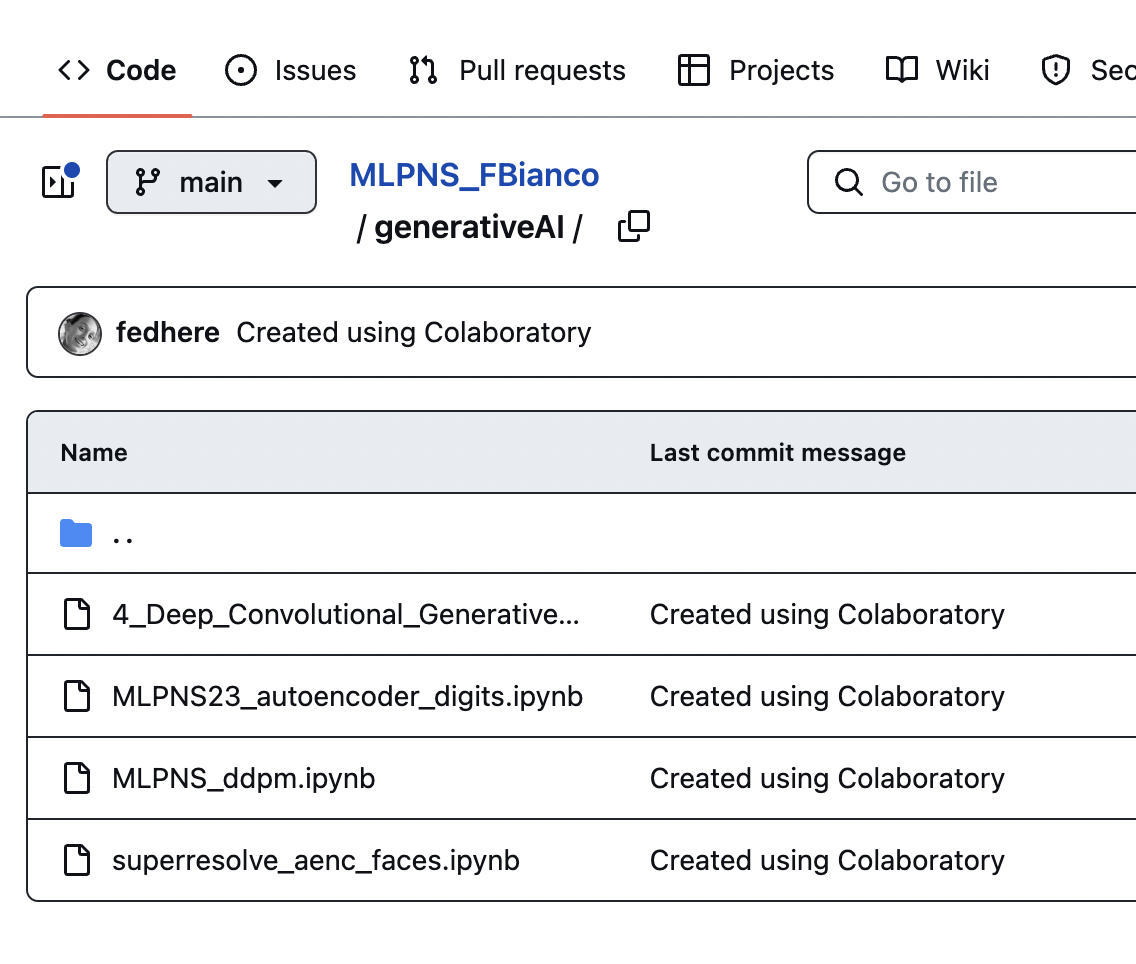
GANs
GANs
VAE
Diffusion models
VAE
Autoencoders
3
Unsupervised learning with
Neural Networks
What do NN do? approximate complex functions with series of linear functions
.... so if my layers are smaller what I have is a compact representation of the data
Unsupervised learning with
Neural Networks
What do NN do? approximate complex functions with series of linear functions
To do that they extract information from the data
Each layer of the DNN produces a representation of the data a "latent representation" .
The dimensionality of that latent representation is determined by the size of the layer (and its connectivity, but we will ignore this bit for now)
.... so if my layers are smaller what I have is a compact representation of the data
Autoencoder Architecture
Feed Forward DNN:
the size of the input is 5,
the size of the last layer is 2
Autoencoder Architecture
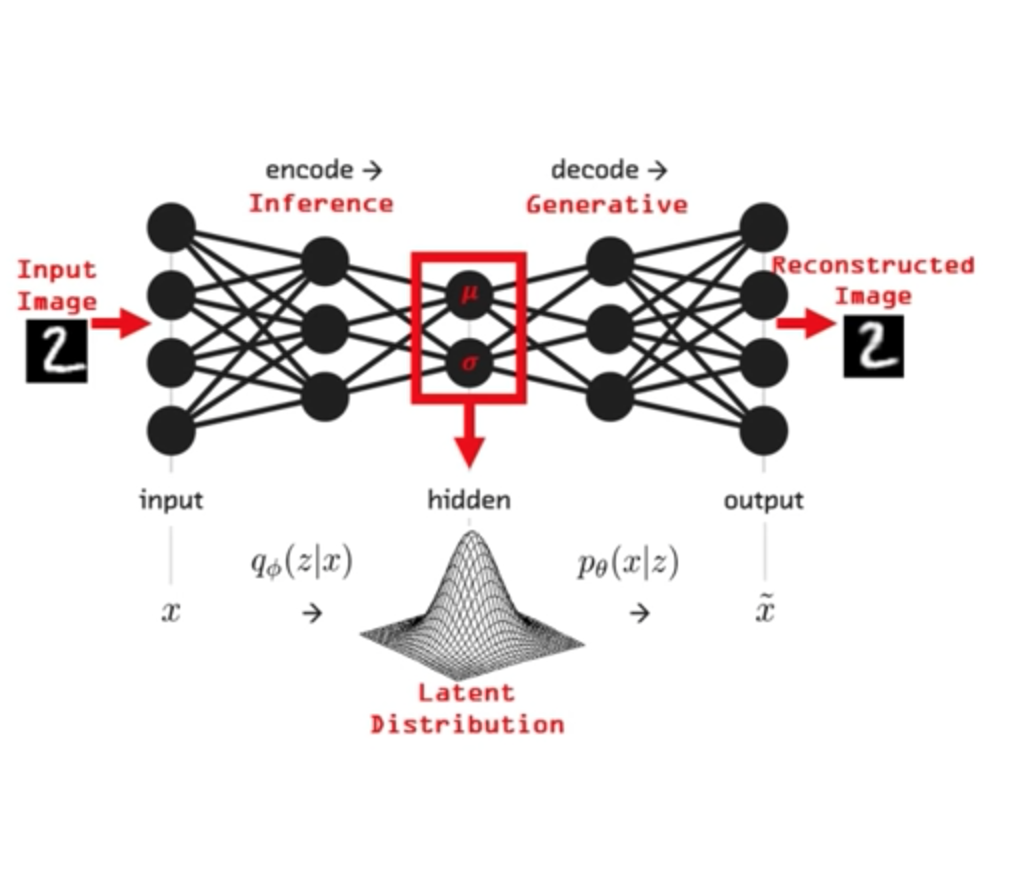
- Encoder: outputs a lower dimensional representation z of the data x (similar to PCA, tSNE...)
- Decoder: Learns how to reconstruct x given z: learns p(x|z)
Autoencoder Architecture

Building a DNN
with keras and tensorflow
Trivial to build, but the devil is in the details!
Building a DNN
with keras and tensorflow
Trivial to build, but the devil is in the details!
from keras.models import Sequential
#can upload pretrained models from keras.models
from keras.layers import Dense, Conv2D, MaxPooling2D
#create model
model = Sequential()
#create the model architecture by adding model layers
model.add(Dense(10, activation='relu', input_shape=(n_cols,)))
model.add(Dense(10, activation='relu'))
model.add(Dense(1))
#need to choose the loss function, metric, optimization scheme
model.compile(optimizer='adam', loss='mean_squared_error')
#need to learn what to look for - always plot the loss function!
model.fit(x_train, y_train, validation_data=(x_test, y_test),
epochs=20, batch_size=100, verbose=1)
#note that the model allows to give a validation test,
#this is for a 3fold cross valiation: train-validate-test
#predict
test_y_predictions = model.predict(validate_X)Building a DNN
with keras and tensorflow
autoencoder for image recontstruction
encoder

This autoencoder model has a 64-neuron bottle neck. This means it will generate a compressed representation of the data out of that layer which is 16-dimensional (the original size is 784 pixels)
Building a DNN
with keras and tensorflow
autoencoder for image recontstruction

This autoencoder model has a 64-neuron bottle neck. This means it will generate a compressed representation of the data out of that layer which is 16-dimensional (the original size is 784 pixels)
Building a DNN
with keras and tensorflow
autoencoder for image recontstruction
decoder

This autoencoder model has a 64-neuron bottle neck. This means it will generate a compressed representation of the data out of that layer which is 16-dimensional (the original size is 784 pixels)
Building a DNN
with keras and tensorflow
autoencoder for image recontstruction

This autoencoder model has a 64-neuron bottle neck. This means it will generate a compressed representation of the data out of that layer which is 16-dimensional (the original size is 784 pixels)
bottle neck
Building a DNN
with keras and tensorflow
autoencoder for image recontstruction
This simple model has 200K parameters!
My original choice is to train it with "adadelta" with a mean squared loss function, all activation functions are relu, appropriate for a linear regression
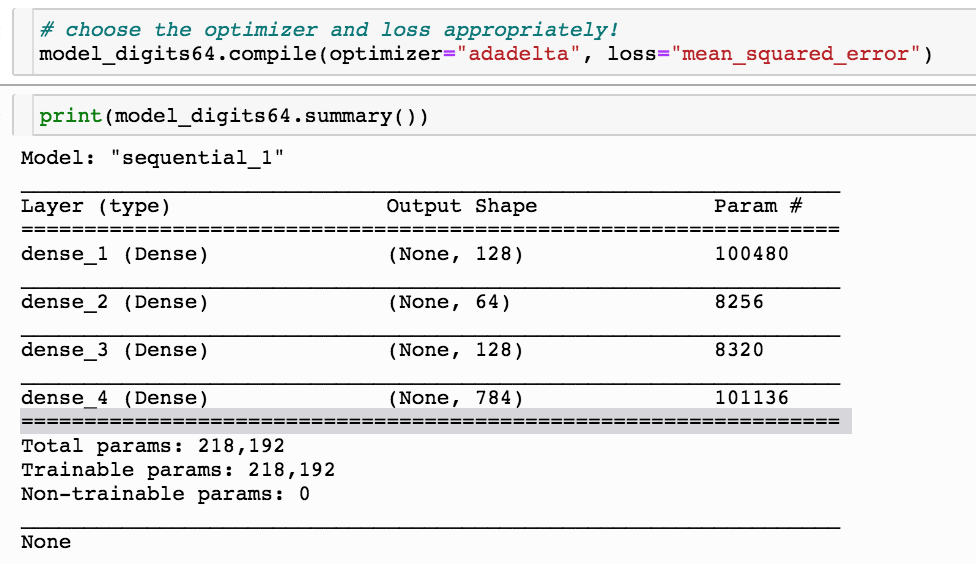
Building a DNN
with keras and tensorflow
autoencoder for image recontstruction

What should I choose for the loss function and how does that relate to the activation functiom and optimization?
Building a DNN
with keras and tensorflow
autoencoder for image recontstruction
What should I choose for the loss function and how does that relate to the activation functiom and optimization?
| loss | good for | activation last layer | size last layer |
|---|---|---|---|
| mean_squared_error | regression | linear | one node |
| mean_absolute_error | regression | linear | one node |
| mean_squared_logarithmit_error | regression | linear | one node |
| binary_crossentropy | binary classification | sigmoid | one node |
| categorical_crossentropy | multiclass classification | sigmoid | N nodes |
| Kullback_Divergence | multiclass classification, probabilistic inerpretation | sigmoid | N nodes |
autoencoder for image recontstruction
model_digits64.add(Dense(ndim,
activation='linear'))
model_digits64_sig.compile(optimizer="adadelta",
loss="mean_squared_error") model_digits64_sig.add(Dense(ndim,
activation='sigmoid'))
model_digits64_sig.compile(optimizer="adadelta",
loss="mean_squared_error")
model_digits64_sig.add(Dense(ndim,
activation='sigmoid'))
model_digits64_bce.compile(optimizer="adadelta",
loss="binary_crossentropy")

loss function: did not finish learning, it is still decreasing rapidly
The predictions are far too detailed. While the input is not binary, it does not have a lot of details. Maybe approaching it as a binary problem (with a sigmoid and a binary cross entropy loss) will give better results

loss function: also did not finish learning, it is still decreasing rapidly

A sigmoid gives activation gives a much better result!

Binary cross entropy loss function: It is more appriopriate when the output layer is sigmoid

Even better results!
original
predicted
predicted
original
predicted
original
predicted
autoencoder for image recontstruction


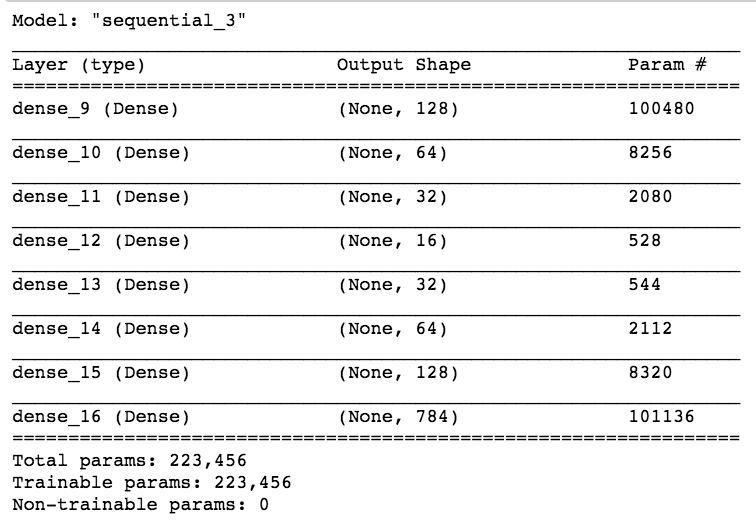
A more ambitious model has a 16 neurons bottle neck: we are trying to extract 16 numbers to reconstruct the entire image! its pretty remarcable! those 16 number are extracted features from the data

predicted
original
latent
representation
models are neutral, the bias is in the data (or is it?)
Why does this AI model whitens Obama face?
Simple answer: the data is biased. The algorithm is fed more images of white people

models are neutral, the bias is in the data (or is it?)


Why does this AI model whitens Obama face?
Simple answer: the data is biased. The algorithm is fed more images of white people
But really, would the opposite have been acceptable? The bias is in society

Joy Boulamwini
models are neutral, the bias is in the data (or is it?)
comparing generative AI models
3

see also https://arxiv.org/pdf/2103.04922.pdf

The latent space is assumed to be Gaussian distributed - this causes inaccuracy (blurry) generation

similar to a VAE but with a NN in the middle that approximates the true distribution of the latent space
The latent space is assumed to be Gaussian distributed - this causes inaccuracy (blurry) generation

Normalizing Flows
have two networks trained at the same time that compete again each other in a minimax game.
The generator generates images, starting with pure noise.
The discriminator classifies the image from the generator as Real/Fake
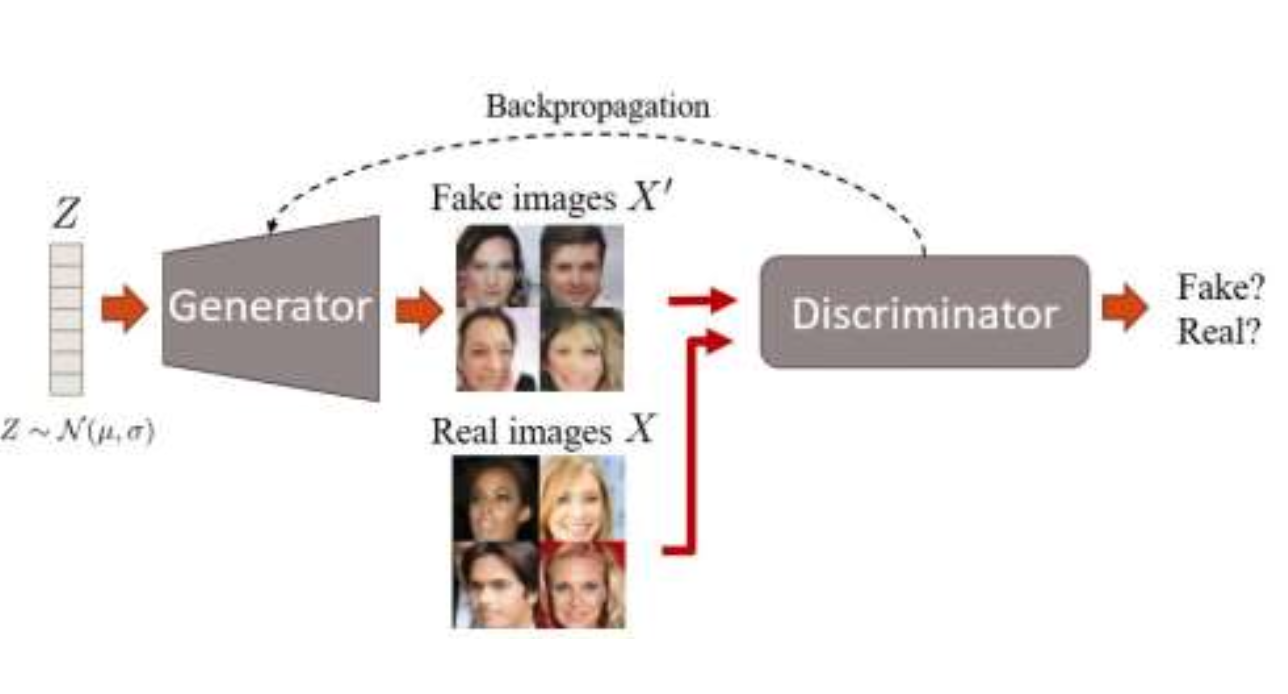
trained not to be fooled by the generator.
generator is trained to make better images
Ian Goodfellow et al., 2014 Generative Adversarial Networks
GANs: Generative Adversarial NN

trained not to be fooled by the generator.
generator is trained to make better images

Minmax Loss Function:


minimize
maximize
GANs: Generative Adversarial NN

trained not to be fooled by the generator.
generator is trained to make better images

Minmax Loss Function:


minimize
maximize
log(D(G(z)))
change introduced to minimize geneerator saturation
GANs: Generative Adversarial NN

DDPM:Denoising Diffusion Probabilistic Model
Ho Jain Abbel 2006

Which generative AI is right for you??
resources
Neural Network and Deep Learning
an excellent and free book on NN and DL
http://neuralnetworksanddeeplearning.com/index.html
Deep Learning An MIT Press book in preparation
Ian Goodfellow, Yoshua Bengio and Aaron Courville
https://www.deeplearningbook.org/lecture_slides.html
History of NN
https://cs.stanford.edu/people/eroberts/courses/soco/projects/neural-networks/History/history2.html